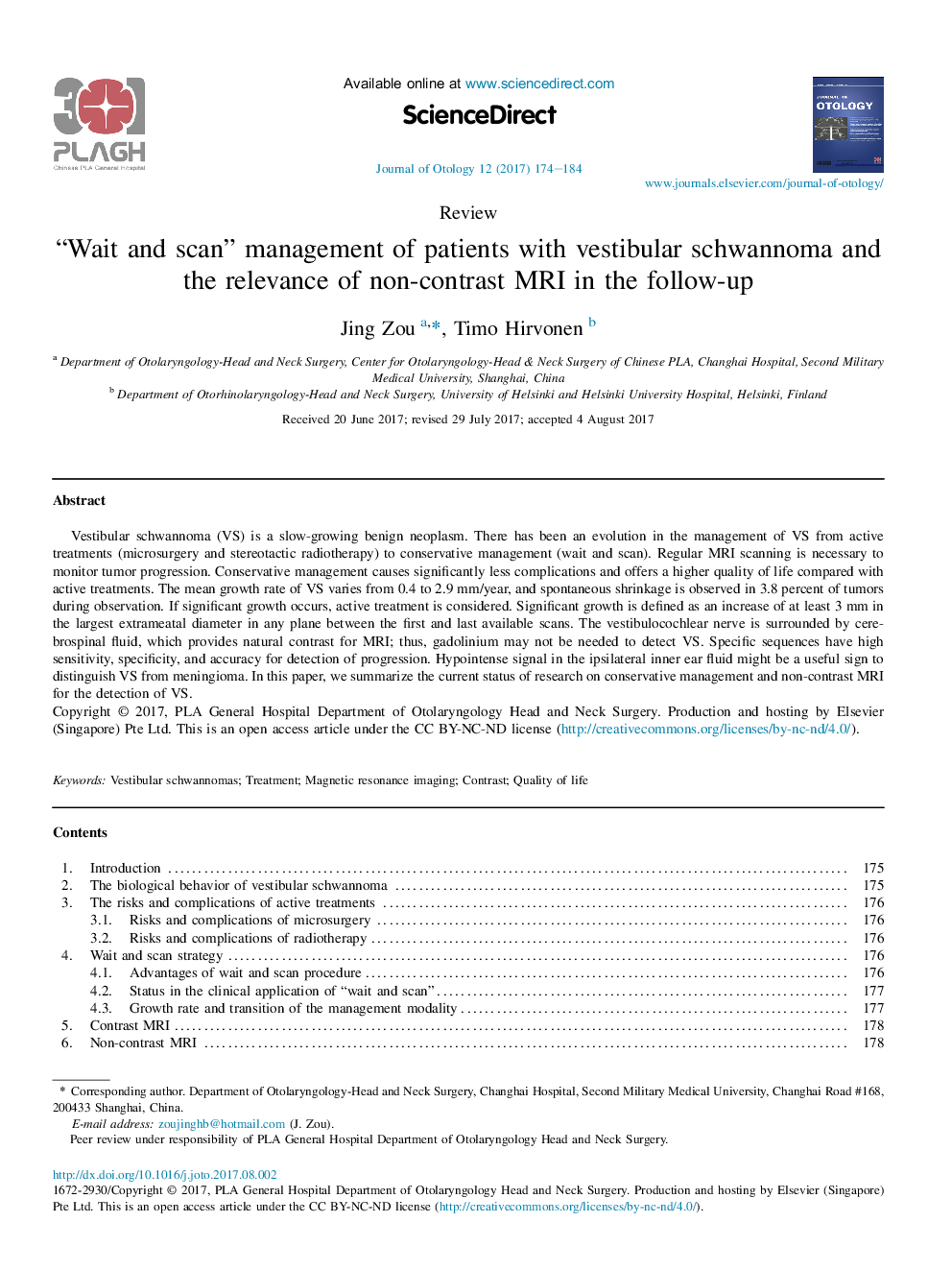| Article ID | Journal | Published Year | Pages | File Type |
|---|---|---|---|---|
| 8806509 | Journal of Otology | 2017 | 11 Pages |
Abstract
Vestibular schwannoma (VS) is a slow-growing benign neoplasm. There has been an evolution in the management of VS from active treatments (microsurgery and stereotactic radiotherapy) to conservative management (wait and scan). Regular MRI scanning is necessary to monitor tumor progression. Conservative management causes significantly less complications and offers a higher quality of life compared with active treatments. The mean growth rate of VS varies from 0.4 to 2.9Â mm/year, and spontaneous shrinkage is observed in 3.8 percent of tumors during observation. If significant growth occurs, active treatment is considered. Significant growth is defined as an increase of at least 3Â mm in the largest extrameatal diameter in any plane between the first and last available scans. The vestibulocochlear nerve is surrounded by cerebrospinal fluid, which provides natural contrast for MRI; thus, gadolinium may not be needed to detect VS. Specific sequences have high sensitivity, specificity, and accuracy for detection of progression. Hypointense signal in the ipsilateral inner ear fluid might be a useful sign to distinguish VS from meningioma. In this paper, we summarize the current status of research on conservative management and non-contrast MRI for the detection of VS.
Related Topics
Life Sciences
Neuroscience
Cellular and Molecular Neuroscience
Authors
Jing Zou, Timo Hirvonen,
